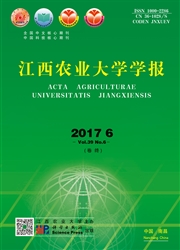

 中文摘要:
中文摘要:
为了筛选适合用于小鼠不同发育时期胚胎的玻璃化冷冻方法,采用EFS20/40、EFS40、DAP213和GP25法分别冷冻保存不同发育期的小鼠胚胎。结果表明,采用EFS20/40法冷冻的2细胞期胚经解冻后发育至扩张囊胚的比率(93%)显著高于EFS40、DAP213和GP25法(分别为70.9%、39.1%和11.1%)(P〈0.01);采用EFS20/40法冷冻保存小鼠4~8细胞期胚时,与EFS40相比,解冻后发育至扩张囊胚的比率差异不显著(分别为86.2%和90.0%),但与DAP213(64.5%,P〈0.05)和GP25法(47.8%,P〈0.01)相比其扩张囊胚率显著增高。此外,虽然EFS40法与EFS20/40法冷冻保存小鼠桑椹胚解冻后的扩张囊胚率差异不显著(分别为68.9%和70.8%),但均显著高于DAP213(38.9%)和GP25法(37.5%)(P〈0.01)。结果表明,EFS20/40法适合用于小鼠的2细胞期冷冻保存,而EFS20/40和EFS40法均适合用于4~8细胞期胚和桑椹胚的冷冻。
 英文摘要:
英文摘要:
Different developmental stages of mouse embryos were vitrified using EFS20/40,EFS40,Nakagata-DAP213 or Schefen-GP25 method respectively to filter the most suitable vitrification scheme. The results showed that the blastocyst formation rate by EFS20/40 method (93%) was significantly higher than those by EFS40,Nakagata-DAP213 and Schefen-GP25 methods (70.9%:39.1%:11.1%)after vitrication–thawing 2-cell embryos. After vitrification–thawing 4~8cell embryos,the blastocyst formation rates were not significantly different between EFS20/40 and EFS40 methods(86.2%:90.0%),but that by EFS20/40 method was better than that by the method of DAP213(64.5%;P0.05)or-GP25(47.8%;P0.01). In addition,blastocyst formation rates were not significantly different between EFS20/40 and EFS40 methods (68.9%:70.8%),but they were significantly higher than the methods of Nakagata-DAP213 and Schefen-GP25 after vitrification–thawing Morula embryos(38.9%:37.5%;P0.01).These results indicated that EFS20/40 method was the most suitable for the 2-cell stage mice cryopreservation,and EFS 20/40 or EFS 40 methods were suitable for 4~8-cell stage embryo and morula vitrification.
 同期刊论文项目
同期刊论文项目
 同项目期刊论文
同项目期刊论文
 期刊信息
期刊信息
